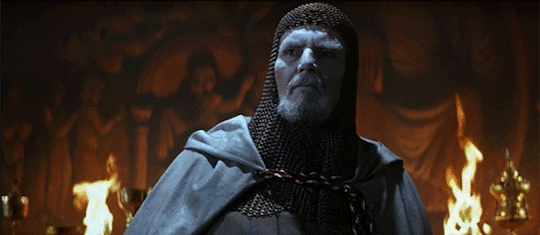#kevin senft
Photo

#alfred pennyworth#daily alfred pennyworth#daily alfred#red hood and the outlaws#scatt lobdell#kenneth rocafort#patrick brosseau#kevin senft#bobbie chase
71 notes
·
View notes
Photo

#tim drake#daily tim drake#daily tim#red hood and the outlaws#scott lobdell#kenneth rocafort#dezi sienty#kevin senft#bobbie chase
33 notes
·
View notes
Photo

#koriand'r#daily koriand'r#red hood and the outlaws#scott lobdell#kenneth rocafort#carlos mangual#kevin senft#bobbie chase
25 notes
·
View notes
Photo

#jason todd#daily jason todd#daily jason#red hood and the outlaws#scott lobdell#kenneth rocafort#carlos mangual#kevin senft#bobbie chase
49 notes
·
View notes
Photo

#roy harper#daily roy harper#daily roy#red hood and the outlaws#scott lobdell#kenneth rocafort#carlos mangual#kevin senft#bobbie chase
14 notes
·
View notes
Text
The Transformers Corner - IDW Hasbroverse - June 2006 - Optimus Prime arrives on Earth By E.j. Su and John Rauch, Simon Bork, Mark Englert, Aaron Myers, Sunder Raj, and Kevin Senft

28 notes
·
View notes
Text
Transformers: Infiltration #6
Read Date: February 19, 2023
Cover Date: June 2006
● Writer: Simon Furman ● Art: E.J. Su ● Colorist: John Rauch (with Simon Bork, Mark Englert, Aaron Myers, Sunder Raj, and Kevin Senft) ● Letterer: Robbie Robbins ● Editor: Chris Ryall ◦ Dan Taylor ●

**HERE BE SPOILERS: Skip ahead to the fan art/podcast to avoid spoilers
Reactions As I Read:
● heheh, my guess is Starscream is juicing to prep for Megatron's arrival
● that's Astrotrain aaaand…. Runabout. Yay for helpful headshots inside the cover!
● Starscream, you look fabulous, dah-ling
● Ratchet, in beat-up ambulance form, is heading eastbound to The Ark with Jimmy, Verity, and Hunter because Prowl wants them out of harm's way.
● Verity isn't happy about this, but Hunter and Jimmy recognize they are lucky to be alive
● GAH A WHOLE ROW OF CREEPY HOLOMATTER SMILES

● the guy on the far right is Prowl but I'm not familiar enough with the others yet to know their vehicle modes off the top of my head
● ok, the cute little Porsche-looking one, white with a thick blue stripe down the center, is Jazz
● Bumblebee radios to Prowl that Megatron has just arrived at the Oregon bunker
● Starscream is in trouble…

● Runabout, Runamuck, Thundercracker, and Astrotrain come out first. Megatron warns them to stand down, that if they fight, they will die
● they stand down

● juiced-up Starscream comes out, calling them cowards
● Ore-13 is what Starscream is souped-up on
● Megatron is… strong
● aww, Astrotrain, Thundercracker, Runamok, and Runabout are trembling as they watch the battle
● the Autobots arrive and they all agree to just watch the battle
● Starscream is starting to realize his mistake
● oof…
● oh yeah, I forgot The Ark was under Lake Michigan
● some Spcial Ops types witnessed the Autobots jumping into the lake. "The Machination wants one of these 'Transformers.' Let's go get 'em one!"
● Prowl admits Ratchet was right and it's time to call in Optimus Prime
● Hunter points out, though, that he's already here
● "Phase 1 Concluded"
● 👏👏👏👏👏
Synopsis:
In the Decepticon Command Bunker in Oregon, Starscream is on the receiving end of a mega-cycle long "hit" of Ore-13. As they wait, Astrotrain and Runabout worry about what they've just heard regarding Megatron recently arriving on Earth and dispatching both Blitzwing and Skywarp in a fight. But when Starscream finally emerges from the energon chamber, he tells them both that, thanks to the Ore-13, they'll be more than ready to take him on when he comes.
Over in Iowa, Ratchet is busy taking Hunter O'Nion, Jimmy Pink, and Verity Carlo back to Ark-19 after their traumatic scouting mission in the abandoned Nebraska Decepticon Bunker. Verity is angry at not being able to help the Autobots investigate the information they brought back, but Hunter and Jimmy tell her that they are more than happy to stay out of it. Verity eventually relents at their words and gives in to joining the post-traumatic stressing out.
Meanwhile, the other Autobots, who are busy investigating, are speeding their way towards the Oregon Decepticon bunker. Bumblebee is already there, quietly monitoring the area, though nothing is happening… yet. Eventually, though, he sees Megatron bounce in just outside the bunker and call for Starscream.
It is Astrotrain, the Battlechargers, and Thundercracker who come out to greet him first, however. Megatron warns them that if they fight him they will die, and gives them the choice of standing down instead, which they accept. Starscream flies out of the bunker at that point, declares them all "strutless cowards", and lays into Megatron with his now super-powered weaponry.
Bumblebee ends up getting tossed around by the backwash and flung off to the side. Prowl tells him to hang on, as his squad is almost there, but Bumblebee tries to warn them off, saying he thinks they'll be bystanders at best, collateral damage at worst.
Megatron retaliates with his fusion cannon, clipping Starscream's wings and causing him to decide to transform and continue his attack in robot mode. He divebombs straight onto Megatron, throws him into the side of a cliff, and opens fire with everything he's got. Starscream starts crowing about how long he's been wanting to defeat Megatron… then reacts in horror as Megatron emerges from the cliff, very much not as deactivated as he was expecting.
Bumblebee finally gets spotted by the other Decepticons who have been watching the fight, but the other Autobots arrive just in the nick of time to bail him out of an attack. Prowl tells everyone they should all stand down and be content to watch the duel play itself out.
And play out it does, as Megatron berates Starscream for his actions and blows a hole straight through him using his fusion cannon. He tells the gathered Decepticons to take Starscream's remains inside, and answers Runamuck's question about what to do about the Autobots present with two words: "Phase… Two."
Dramatic entrances are the right of all sentient beings.
Sunstreaker asks Prowl if they're just going to let the Decepticons get away with going back into the bunker. Prowl says, "Yep," and Sunstreaker reacts with relief. They all head back to Lake Michigan and down into the water to return to Ark-19… where it turns out that they're being watched by Machination agents, who are ready to enact the plan to kidnap one of the Autobots now that they've confirmed their location.
As they get inside, Prowl states that he thinks it's finally time to contact Optimus Prime… but as he says so, Hunter points to the door: Prime has already arrived!
(https://tfwiki.net/wiki/Infiltration_issue_6)

Fan Art: Megatron vs Starscream by davidnery
youtube
0 notes
Text
Women’s Rugby Japan vs Canada World Cup game is scheduled for Sunday, October 9, 2022.
New Post has been published on https://thedailyrugby.com/womens-rugby-japan-vs-canada-world-cup/
The Daily Rugby
https://thedailyrugby.com/womens-rugby-japan-vs-canada-world-cup/
Women’s Rugby Japan vs Canada World Cup game is scheduled for Sunday, October 9, 2022.
The Japan and Canada Women’s Rugby teams will go head to head on the 9th of October, 2022. You must be wondering how to watch Women’s Rugby World Cup: Japan vs Canada outside UK. ITV is geo-restricted outside the UK due to content licensing rights. However, the daily rugby can give you access.
Rugby Canada Announce 32 Player Squad for Women’s Rugby World Cup in New Zealand – First Match October 9th vs Japan
Coach Kevin Rouet has named his 32 player roster going to NZ for the World Cup. One of the most notable omissions is Pam Buisa, a player who was making headlines during the UK tour of November 2021 under coach Sandro Fiorino. She came off the disappointing Olympic 7s performance that summer but shone as an impact player in the XVs tour that fall.
Women’s Rugby Japan vs Canada World Cup
This will be the fifth time Japan have participated in the women’s Rugby World Cup, but they have not enjoyed much success at the tournament.
They have won only one pool game, beating Sweden 10-5 in 1994. Can they make it two against Canada in Whangarei this Sunday?
Canada have featured at every women’s Rugby World Cup and will become the first nation to play 40 matches in tournament history this weekend. Sunday’s pool opener against Japan is also Canada’s 150th women’s Test match.
Three players – second-row Tyson Beukeboom, flanker Karen Paquin and full-back Elissa Alarie – are playing in their third World Cup, having been part of the Canada squad that made the 2014 final as well as playing at RWC 2017.
That earned her a starting flanker role in the June 2022 tour to NZ where she started at both blindside and openside over the three games against USA, Australia and NZ. She had a quiet tournament and in the July home tests against Italy and Wales, coach Rouet went with Fabiola Forteza, Karen Paquin, Courtney Holtkamp, Sara Svoboda, Gabrielle Senft in the flanker roles. He must have liked what he saw as all those players made the cut, Buisa is on the non-travelling reserves.
In his selection comments he did mention the selection process took into account “team players and a good group to be together for 2 months, it was a balance in the decision for sure”.
On which date Japan Women vs Canada Women going to play?
The Japan Women vs Canada Women match date is on the 9th of October 2022. The 1991 Women’s Rugby World Cup marked Japan’s entry into the global stage. Japan has since participated in three other World Cups – in 1994, 2002, and 2017. The Japan Women claimed the Asia Rugby Women’s Championship in 2015, 2016, and 2017.
The Canada women’s national rugby union team is represented by Rugby Canada and plays in red and black. Currently classified as the third-best team in the world, they were ranked fifth in World Rugby’s first women’s rankings. Canada participates in events like the Rugby World Cup and the Pacific Four Series.
Canada Women’s Rugby World Cup Squad 2022
Elissa Alarie; Maddy Grant, Sara Kaljuvee, Alex Tessier, Paige Farries; Taylor Perry, Brianna Miller; Brittany Kassil, Emily Tuttosi, DaLeaka Menin, Courtney Holtkamp, Tyson Beukeboom, Fabiola Forteza, Karen Paquin, Sophie de Goede (captain).
Replacements: Gilian Boag, Mikiela Nelson, Alexandria Ellis, Ngalula Fuamba, Emma Taylor, Gabrielle Senft, Justine Pelletier, Julia Schell.
Canada Women’s Rugby World Cup Fixtures 2022
(All kick-off times are UK & Ireland time)
Pool B
Sun 9 Oct, Japan v Canada (3.15am, Northland Events Centre, Whangarei)
Sun 16 Oct, Italy v Canada (12.45am, Waitakere Stadium, Auckland)
Sun 23 Oct, Canada v USA (3.15am, Waitakere Stadium, Auckland)
Japan Women’s Rugby World Cup Squad 2022
Rinka Matsuda; Hinano Nagura, Mana Furuta, Shione Nakayama, Komachi Imakugi; Ayasa Otsuka, Megumi Abe; Saki Minami (captain), Nijiho Nagata, Sachiko Kato, Yuna Sato, Maki Takano, Seina Saito, Iroha Nagata, Ayano Nagai.
Replacements: Hinata Komaki, Misaki Suzuki, Makoto Lavemai, Kie Tamai, Otoka Yoshimura, Moe Tsukui, Minori Yamamoto, Kyoko Hosokawa.
Japan Women’s Rugby World Cup Fixtures 2022
(All kick-off times are UK & Ireland time)
Pool B
Sun 9 Oct, Japan v Canada (3.15am, Northland Events Centre, Whangarei)
Sat 15 Oct, USA v Japan (5.30am, Northland Events Centre, Whangarei)
Sun 23 Oct, Japan v Italy (0.45am, Waitakere Stadium, Auckland)
0 notes
Photo






Masters of the Universe: Power of Fear (Dream Halloween October 2003)
“The Power of Fear” (11-16 of 16)
Story by Val Staples
Art by Emiliano Santalucia & Enza Fontana
Colors by Kevin Senft & John Rauch
Color assist Shaynne Corbett
Letters by Robert Kirkman
38 notes
·
View notes
Text
evaluation
This essay will evaluate how a public figure uses social media site Twitter to communicate with their audience. The public figure this essay will focus on is singer songwriter Shura (@weareshura on Twitter). Shura has 41.7K followers on twitter on the date this essay was produced. Although Shura has achieved her celebrity status by being a talented singer, she has significantly less followers than many micro-celebrities, such as Camden Scott (@cammiescott) who is an American Youtuber with 188.8K followers on Twitter. This essay will look at how although Shura has achieved her celebrity status, she manages her social media as an attributed celebrity may manage theirs. Shura is an openly gay woman which creates interesting niche that other celebrities may not have, she makes a lot of effort to make this a topc of discussion on her twitter, so much so that she uses her sexuality as her brand, calling herself ‘The Lesbian Pope’.
Aleksandra Denton, publicly known as Shura, is a 28 year old, London based, singer, songwriter and record producer. In August 2019, she released her second album titled ‘Forevher’ which Pitchfork managazine described as “First and foremost, about queer women’ (Pitchfork.com, 2019). Shura’s sexuality is at the forefront of her music, her personal life and her self-identified brand and we see a lot of discussion around it on her social media accounts. During the time of monitoring her social media use (January 2020-March 2020), it had been five months since Shura had released Forevher, when visiting her Twitter page there is still a lot of promotional content for the album - for example her pinned tweet - which announces that Forevher has been released. However, because it has been a number of months since the release, the majority of the material on her profile has nothing to do with the album and is in fact just documenting her daily life. During the months of monitoring, Shura released a single titled ‘Elevator Girl’ allowing us to also assess how she deals with promoting a new project on her social media.
Shura uses both Instagram and Twitter in equal measure, however tends to use Twitter to communicate with fans much more. According to Stever, G.S (2013) “celebrities used Twitter to communicate both with other celebrities and with members of the public or fans about their work as well as personal likes and dislikes, conveying information that revealed personal activities that are not typically shared in other forums”. This is an accurate depiction of how Shura uses her Twitter account, with particular emphasis on communicating with fans about personal matters; mainly regarding her sexuality. Baym, N.K. (2014, p224) suggests that “an audience on Twitter is not the same as an audience of listeners” they also interview Hoyem, a popular Norwegian artist who does not use Twitter as much as he says he can “count on earning a living from his music”. With over 700,000 monthly listeners on Spotify yet only 41,700 followers on twitter, why is it still so important for Shura to use twitter to maintain her brand and her relationship with her audience?
Although Shura does not perfectly fit the popular definition of a micro-celebrity due to achieving her celebrity status primarily through her talents in the music field, she still very much uses her social media to develop and maintain her audience (Senft, 2008).
Marwick & Boyd (2011) suggest that there are numerous techniques in micro-celebritydom, all of which Shura uses on her Twitter account. Firstly there is the technique of “ongoing maintenance of the fanbase”. This is done simply by Shura being active on social media. Although only a small sample of tweets were collected and analysed on the blog posts, Shura tweets something almost every day, this allows her to maintain her fan base by connecting with them on a daily basis, even if this is just by liking a tweet or replying with a simple emoji.
Another technique they suggest is “performed intimacy”. An example of this on Shura’s Twitter can be seen in the blog post relating to the tweet from 18/02. In this tweet, Shura discusses her struggles with mental health, a very personal subject, with a very wide audience. Then, she publicly discusses alternative therapies with one of her followers who recommended she tries CBT. This is an example of performed intimacy because mental health and anxiety is, for many, a personal subject which is discussed with loved ones or medical professionals; yet Shura discussed this with a fan on Twitter.
Another technique that is suggested by Marwick and Boyd is “authenticity and access”. Shura’s authenticity is clearly illustrated in the blog post containing tweets with anecdotes of her friend’s sexual experience. In this tweet Shura announces “I love lesbians”, she never attempts to hide her sexuality or be anyone but her true, genuine self.
However, Marwick and Boyd say that a micro-celebrity’s self presentation is “carefully constructed to be consumed by others”. This is where Shura deviates from the suggested micro-celebrity techniques. From assessing Shura’s tweets, it’s fair to suggest that she uses twitter as a place to engage in casual conversation with followers, whether they are fans of her music or not. And in fact, her brand is created by tweeting things that don’t seem overly constructed and make her appear to be a friendly, down to earth person such as the “me, also me” tweet from 1st February.
According to Baym, N.K (2014, pg224) artists have to make choices about how to interact with their fans, depending on who they think those fans are and what they are interested in. Shura’s primary audience is made up of queer womxn. When scrolling through her followers list we can see many of them with a rainbow flag emoji in their username or bio, which is a popular way for queer people to identify this fact on their social media sites. It is clear that Shura has a firm understanding of her fanbase and the kind of content that they want to see and interact with, she is likely aware that a lot of her fans like her because she is so openly gay. Because of this, many of her tweets are focused on things that have particularly gay representation for example, she made a lot of tweets expressing how much she enjoyed a new lesbian film ‘Portrait of a Lady on Fire’. This generated a lot of discussion between her and her fans about how much they also enjoyed the film. Tweeting about things that are completely separate to her music but still relatable to her followers is an excellent way to create a two way relationship with her followers whether they enjoy her music or not.
In conclusion, Shura uses Twitter very effectively to communicate with fans and followers, embracing the need to transition to an online platform to interact with her audience.
However, it could be argued that shura has in fact taken advantage of the ease of two way communication on Twitter and is using it as a replacement for face to face interactions with fans. In the chapter written by Baym, N.K, they mention numerous artists who have used twitter to facilitate in-person interactions such as Billy Bragg who has used Twitter to find and join local protesters whilst on tour. There is no evidence on Shura’s Twitter that she makes any effort to meet with fans face to face. She should be conscious that although Twitter is a useful tool to interact with fans, it should not be used as a replacement for real life, in person conversation.
Some may also suggest that Shura perhaps tweets too much. Shura’s Twitter following currently sits at 41.7 thousands accounts, this is a significant number of followers, however it’s not uncommon for someone in her field to gain upwards of 300,000 followers for example, Clairo who is also a solo female performer. By replying to fans so abundantly now, she may be unnecessarily adding pressure to herself to reply to fans. If the fans she currently has now expect Shura to reply, because that’s what she has always done, it may have a detrimental impact on her relationship with fans when it is simply not possible to reply to all of the tweets. Is the rate she is tweeting and replying to fans now sustainable if and when her audience grows?
References
Baym, N. (2019) ‘The Perils and Pleasures of Tweeting with Fans’ Weller, K., Bruns, A., Burgess, J., Mahrt, M., & Puschmann, C. (Eds.). (2014). Twitter and society (Digital Formations, 89). New York: P. Lang. Last accessed: 02/04/2020 available online: https://nbn-resolving.org/urn:nbn:de:0168-ssoar-47764-2
Cliff, A (2019) Shura Forevher. pitchfork.com. Last accessed: 02/04/2020. available online: https://pitchfork.com/reviews/albums/shura-forevher/
Marwick, A. and boyd, d. (2011) To see and be seen: celebrity practice on Twitter. Convergence: The International Journal of Research into New Media Technologies, 17(2) 139–158. Last accessed 02/04\2020. available online:https://journals-sagepub-com.mmu.idm.oclc.org/doi/pdf/10.1177/1354856510394539
RUBERG, B. (2019). #nohomo: Homophobic Twitter Hashtags, Straight Masculinity, and Networks of Queer Disavowal. In De Kosnik A. & Feldman K. (Eds.), #identity: Hashtagging Race, Gender, Sexuality, and Nation (pp. 218-234). Ann Arbor: University of Michigan Press. Last accessed: 02/04/2020, available online: www.jstor.org/stable/j.ctvndv9md.17
Senft, T. M. (2013) Microcelebrity and the Branded Self. In J. Hartley, J. Burgess and A. Bruns (eds.), A Companion to New Media Dynamics. Oxford: Wiley-Blackwell
Stever, Gayle & Lawson, Kevin. (2013). Twitter as a Way for Celebrities to Communicate with Fans: Implications for the Study of Parasocial Interaction. Last accessed: 02/04/2020. Available online: https://www.researchgate.net/profile/Gayle_Stever/publication/263257850_Twitter_as_a_Way_for_Celebrities_to_Communicate_with_Fans_Implications_for_the_Study_of_Parasocial_Interaction/links/00b4953a44862a8747000000/Twitter-as-a-Way-for-Celebrities-to-Communicate-with-Fans-Implications-for-the-Study-of-Parasocial-Interaction.pdf?origin=publication_detail
0 notes
Photo

#alfred pennyworth#daily alfred pennyworth#daily alfred#red hood and the outlaws#scatt lobdell#kenneth rocafort#patrick brosseau#kevin senft#bobbie chase
4 notes
·
View notes
Photo

#tim drake#daily tim drake#daily tim#red hood and the outlaws#scott lobdell#kenneth rocafort#dezi sienty#kevin senft#bobbie chase
22 notes
·
View notes
Photo

#koriand'r#daily koriand'r#red hood and the outlaws#scott lobdell#kenneth rocafort#carlos mangual#kevin senft#bobbie chase
3 notes
·
View notes
Photo

#jason todd#daily jason todd#daily jason#red hood and the outlaws#scott lobdell#kenneth rocafort#carlos mangual#kevin senft#bobbie chase
22 notes
·
View notes
Photo

#roy harper#daily roy harper#daily roy#red hood and the outlaws#scott lobdell#kenneth rocafort#carlos mangual#kevin senft#bobbie chase
10 notes
·
View notes
Text
An Analysis of “Selfie Culture” Using Gramsci’s Theory of Hegemony and Lacanian Psychoanalysis
The theory of hegemony as developed by Gramsci (2009, p.82) refers to the condition in which the ruling class employs ‘intellectual and moral leadership’ over the subordinate class. Storey (2012, p.82), adds that the concept of hegemony as a consensus, suggest a society in which subordinate groups actively accept the values and ideals subjected by the ruling “hegemonic” class. Lacanian psychoanalysis, is Jacque Lacan’s re-articulation of Freud’s psychoanalysis as a biological science into a study more centered on culture (1989, p.103). Lacan introduces the Real, the Symbolic and the three stages of development that individuals go through: mirror stage, fort-da game and Oedipus complex (Storey, 2012, pp.103-106). In this paper, the aforementioned theories, within the context of cultural studies, will be applied in the attempt to analyze “selfie culture” and ultimately, the paper will be concluded with the selection of the theory that is more optimum in the study of this particular popular culture.
Senft (2015, p.1) defines “selfie culture”, as a self-imaging practice adopted globally.In the year 2013, the word ‘selfie’ was named word of the year by Oxford Dictionaries and was defined as "A photograph that one has taken of oneself, typically one taken with a smartphone or webcam and uploaded to a social media website” (Brumfield, 2013). This signified the massive impact the modern-day self-portrait had, not just on society’s vocabulary, but on popular culture as well. Furthermore, the increase of social media platforms and apps in the past years has given the selfie more channels to showcase its popularity on. The act of taking selfies can be classified as a cultural practice as it suits the definition of culture suggested by Williams (1983, p.5-13) as, ‘a particular way of life, whether of a people, a period or a group’. In a 2015 survey conducted by Boston teeth whitening brand, Luster Premium White, it was calculated that the average millennial could take up to 25,700 selfies in his or her lifetime (Glum, 2015), thus proving that the practice of selfie-taking is indeed a way of life. Selfie-taking falls into multiple definitions of popular culture presented by Williams. Firstly, it is a culture widely favored by a vast majority of society especially the social media society. Secondly, it is “inferior culture” in the sense that it is not difficult to practice and therefore cannot achieve the status of high culture.
Hegemony, in regards with “selfie culture”, can be interpreted in multiple ways as the masses accept the social practice of selfie-taking imposed on social life and social media life, by the society around them, those they are connected to on social media, celebrities, social media influencers, app makers and mobile phone producers. Apter (2014) suggest that the urge to take selfies may be an influence of celebrity culture, where there is a need to constantly be seen to ease their anxiety about their status in the world. Storey (2012, p.11) proposes that hegemony theory provides an opportunity to “locate the struggle between resistance and incorporation as taking place within and across individual popular texts and practices.” The aspect of resistance can be seen amongst a group of individuals within society that condemn the excessive amount of selfie-taking as form of narcissism, and yet engage in this practice by incorporating it in their lives occasionally.
Social media which holds the role of an ideological state apparatus in the 21st century, promotes the belief that sharing the daily exploits of one’s life on social media sites is the natural thing to do and those that abstain from that belief are a rarity. Social media influencers - individuals that have a large amount of following on social media - are advocates of this belief as they constantly post selfies on their multiple social media accounts to advertise their actions and endorsements to their followers. These social media influencers, mainly from the millennial generation, make a living from posting selfies (Saul, 2016). Commodities provided commercially are used by “youth subcultures” based on their self-interest and beliefs (Hebdige (1979), p.84). The commodities provided being social media, a phone with a front-facing camera, brands in need of marketing, and hegemonic norm of sharing one’s daily life on social media, has enabled these group of individuals within the society to form their own lucrative business. Kim Kardashian, a leading figure in the ‘selfie game’ and author of Selfish, a single book containing 445 pages of selfies, is one of the many individuals that have helped shape the hegemonic norm prevalent in the type of selfies posted on social media. Selfies that do not cohere with these norms are seen as less favorable as compared to the ones that do (Alexander, 2015).
Another form of hegemony that is visible within the “selfie culture”, is the relationship between both mobile phone and app makers, and their industries. Storey(2012, p.84) proposes that hegemony theory allows popular culture to be seen as the product created from the mixture of what is created from ‘above’ and ‘below’. In the case of “selfie culture”, the act of taking selfies was not started by a dominant class, but by individuals that simply turned the traditional camera on themselves to photograph a self-image. It may have well been made possible due to the light weight property of the first digital camera invented by Steve Sasson in 1975 (McFarland, 2015). However, as the popularity of the practice increased, mobile phone makers took notice and soon in 2013, the front-facing camera made appeared on their devices (Wikiwand.com). The front-facing camera has since become a feature that mobile phone buyers place a heavy importance on when purchasing, and hence mobile phone makers cater to their demands and try to achieve hegemony in the smartphone market (Savov, 2014).
Meanwhile, app makers that observed the growing practice of sharing both regular pictures and selfies, proceeded to create platforms where users could share these images. Snapchat and Instagram, two photo-sharing apps, are amongst the most popular apps available on the Google’s App Store (Eadicicco, 2016). Like Sasson, the creator of the digital camera, Kevin Systrom, the creator of Instagram, is being held responsible for creating the “selfie-obsessed culture” (Gordon, 2016). As these apps have a shared hegemonic power within the app industry, they dictate the type of apps society uses in their everyday lives and consequently have a say in the type of content that social media users upload as well.
Lacanian psychoanalysis, can be used to understand the human behavior involved in the practice of sharing and taking selfies. Lacan (no date) suggest that everyone is born with a condition called ‘lack’ which subsequently try to overcome for the rest of our lives (Storey, 2012, p.103). To this Storey (2012, p.103) adds, that each individual experiences ‘lack’ in different ways as it is a “fundamental condition of being human.” This ‘lack’ in regards to “selfie culture” can be related to self-esteem issues. In the study conducted by Singh and Tripathi ([no date], p.2), they state that The American Psychiatric Association (APA) believes that selfies are posted unto social media as a way to overcome low self-esteem.
In the three stages of development introduced by Lacan, the first ‘mirror stage’, has been closely associated with the practice of taking selfies. ‘The mirror stage’ as explained by Lacan (2009, p104), is the point in our lives in which the idea of ourselves being a unique individual emerges. It is in this that the image seen in the mirror becomes known as the “ideal ego” which in the image of ourselves imaged to have no ‘lack’ unlike the way we perceive ourselves in reality (Qaiz, 2011, p.2). By viewing social media as a mirror, we are given more control on how we perceive ourselves and how others view us as well (Blaskovich, 2013). Social media users see the version of themselves in their selfies as more version of themselves.
Storey (2012, pg. 104) adds to Lacan’s elaboration of ‘the mirror stage’ by stating that “…we begin to see ourselves as separate individuals: that is, as both subject (self that looks) and object (self that is looked at).” According to Chevrier (2014,p.10), this is image is known as “another”, and is a social construct. The thoughts of Storey are perfectly summed up in today’s culture of projecting an altered image of one’s self on social media (object) that is not our natural state (subject), or as the title of the video created by Ditch the Label suggest, “Social Media Vs. Reality” (Are You Living an Insta Lie? Social Media Vs. Reality, 2017). The practice of altering one’s image may be more prevalent in this era, however Hudson (2014, p.7) argues that artist of the past frequently manipulated self-images to suit their own purposes.
The second stage of development is the ‘fort-da game’ stage, originally coined by Freud. Lacan (2012, p.104) reinterprets Freud’s idea as the child entering the Symbolic. The Symbolic is defined by Tyson (2006, p.8) as “entering the world of loss and lack”. Storey (2012, p.103) claims that this is when one is introduced to cultural classification which is further explained in Qazi’s (2011, p.8)statement, “The Symbolic Order dominates human culture and social order, for to remain solely in the Imaginary Order is to render one incapable of functioning in the society”. The entrance into the Symbolic can be viewed as a young teenager entering into the domain of social media so as to do what is a norm culturally. The act of taking selfies then is subsequently a form of complying with the norms present within the Symbolic. Although there is a third stage of development, the ‘Oedipus complex’, as introduced by Freud, Lacan has reworked this into ‘the mirror stage’.
To conclude, the two theories - theory of hegemony and Lacanian psychoanalysis - can been used to study the inner-workings of “selfie culture”. Although both theories can be used to understand 1) the hegemonic relations prevalent within the selfie industry and 2) how the human behavior is involved in the act of selfie-taking, ultimately one theory is better suited at discussing this topic. Based on the process of writing this paper which includes the period of researching, I have come to conclude that Gramsci’s theory of hegemony is better suited to understand and analyze “selfie culture” for multiple reasons. Firstly, it enables us to delve into the multiple levels of hegemony that is involved in the culture itself and not focus solely on the psyche of the individual taking the selfie. It widens our view on the simple act of selfie-taking which we often times presume to be a very personal act absent of the influence of other forces. Secondly, hegemony is a topic that can be widely related to all aspects of life be it religion, education, economics, politics, or in this case, culture. Its versatility allows us to understand how the basic relationship between the dominant and subordinate class works in multiple layers of society and has an effect on the practices in our lives. Finally, the theory of hegemony is ideal in the study of how multiple factors such as technological advances, developments of new trends and evolving norms, alter our pre-existing beliefs and leads us to form new ones causing us to indulge ourselves in new cultural practices.
References
Alexander, Marielle (2015) Selfies and the role they play in popular culture [online] Available from: http://www.villanovan.com/news/view.php/1013979/Selfies-and-the-role-they-play-in-popula [accessed 27/03/2017].
Apter, Terri (2014) Why we really take selfies: the 'terrifying' reasons explained by Sanghani, R. [online] Available from: http://www.telegraph.co.uk/women/10760753/Why-we-really-take-selfies-the-terrifying-reasons-explained.html [accessed 28/03/2017].
Are You Living an Insta Lie? Social Media Vs. Reality (2017) Directed by Ditch the Label [video]
Blaskovich, Devin (2013) ME, MY SELFIE AND I: A PSYCHOANALYSIS OF THE ‘SELFIE’ [online] Available from: https://yourfriendshouse.com/uncategorised/me-my-selfie-i-a-psychoanalysis-of-the-selfie/ [accessed 28/03/17].
Brumfield, Ben (2013) Selfie named word of the year for 2013 [online] Available from: http://edition.cnn.com/2013/11/19/living/selfie-word-of-the-year/ [accessed 27/03/17].
Chevrier, Jean-François (2014), ‘The Selfie: Making sense of the “Masturbation of Self-Image” and the “Virtual Mine-Me”’ in Alise, T. pg.10.
Eadicicco, Lisa (2016) These Are the Most Popular iPhone Apps of 2016 [online] Available form: http://time.com/4592864/most-popular-iphone-apps-2016/ [accessed 29/03/17].
Glum, Julia (2015) Millennials Selfies: Young Adults Will Take More Than 25,000 Pictures Of Themselves During Their Lifetimes: Report [online] Available from: http://www.ibtimes.com/millennials-selfies-young-adults-will-take-more-25000-pictures-themselves-during-2108417 [accessed 27/03/2017].
Gordon, Bryony (2016) Instagram's Kevin Systrom, the man who became a billionaire – from selfies [online] Avaible from: http://www.afr.com/technology/social-media/instagrams-kevin-systrom-the-man-who-became-a-billionaire--from-selfies-20161127-gsyqok [accessed 29/03/2017]
Gramsci, Antonio (2009), ‘Marxisms’ in Cultural Theory and Popular Culture: An Introduction, 6th edn, edited by John Storey, Harlow: Pearson Education.
Hebdige, Dick (1979) ‘Marxisms’ in Cultural Theory and Popular Culture: An Introduction, 6th edn, edited by John Storey, Harlow: Pearson Education
Hudson, Mark (2014), ‘Put that phone away! An exploration of the selfie practices of Irish women and their negotiation of selfie culture’ in Bernice, M.L. p.7.
Lacan, Jacque (1989), ‘Psychoanalysis’ in Cultural Theory and Popular Culture: An Introduction, 6th edn, edited by John Storey, Harlow: Pearson Education.
McFarland, Matt (2015) The poor guy who invented the digital camera is now getting blamed for selfies [online] Available from: https://www.washingtonpost.com/news/innovations/wp/2015/05/12/the-poor-guy-who-invented-the-digital-camera-is-now-getting-blamed-for-selfies/ [accessed 29/03/17].
Qazi, Khursheed Ahmad (2011), ‘Lacanian concepts - Their Relevance to Literary Analysis and Interpretation: A Post Structural Reading’, The Criterion: An International Journal in English, p.2-8.
Senft, Theresa (2015), ‘The Skin of the Selfie: (Unabridged Version)’, p.1.
Sing, S and Tripathi, K.M. [no date], “SELFIE: A New Obsession”, p.2.
Storey, John (2009), Cultural Theory and Popular Culture: An Introduction. Harlow: Pearson Education.
Saul, Heather (2016) Instafamous: Meet the social media influencers redefining celebrity [online] Avaible from: http://www.independent.co.uk/news/people/instagram-model-natasha-oakley-iskra-lawrence-kayla-itsines-kendall-jenner-jordyn-woods-a6907551.html [accessed 27/03/17].
Savov, Vlad (2014) Why phone companies care more about the camera on the front than the back [online] Available from: http://www.theverge.com/2014/9/5/6110609/selfie-cameras-at-ifa [accessed 27/03/2107].
Tyson, Lois (2006), ‘Lacanian concepts - Their Relevance to Literary Analysis and Interpretation: A Post Structural Reading’ in Qazi, Khursheed Ahmad , The Criterion: An International Journal in English, p.8.
Wikiwand.com [no date] Front-facing camera [online] Available from: http://www.wikiwand.com/en/Front-facing_camera [accessed 28/03/2017].
Williams, Raymond (1983) ‘What is popular culture?’ in Cultural Theory and Popular Culture: An Introduction, 6th edn, edited by John Storey, Harlow: Pearson Education
0 notes